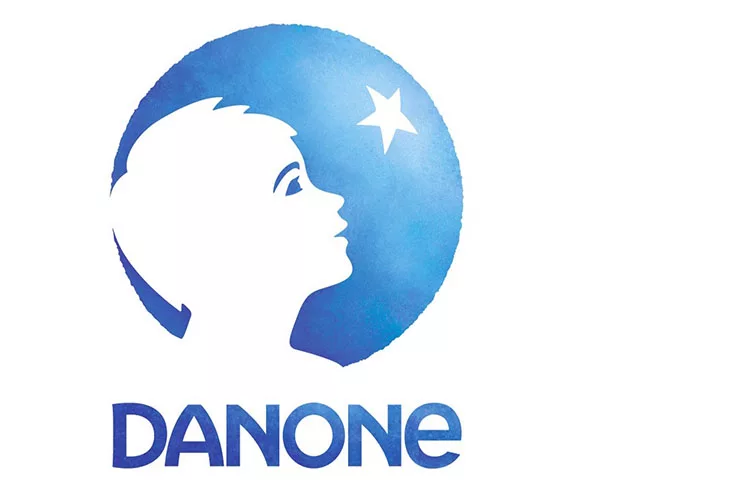In 2017, Danone CEO Emmanuel Faber told shareholders about the company’s plan to obtain B Corp certification. The public statement was the first of its kind from a multinational company and signaled the next phase of an already ambitious sustainability journey at Danone.
Based in Paris, the $26 billion multinational counts Evian bottled water, Dannon yogurt, and Blédina baby foods among the well-known brands in its portfolio. With the recent acquisition of WhiteWave Foods, its North American subsidiary now includes the likes of Horizon Organic, Earthbound Farm organic produce, and So Delicious Dairy-Free beverages, cheeses, and desserts. In 2017, DanoneWave, the newly combined entity of WhiteWave Foods and Danone’s American dairy business, incorporated as the largest public benefit corporation in the United States.
Over half of all US states now allow companies to register as benefit corps — a move that requires boards to consider environmental and social impacts alongside shareholder value. B Corp certification, on the other hand, is entirely elective and independent of state regulation. Instead, companies go through the rigorous B Impact Assessment (BIA), which ranks social and environmental performance on a scale of 0 to 200. Any score higher than 0 points is a good score, as a positive score indicates that the company is doing something positive for society and the environment beyond standard business practice. Most companies that take the BIA score between 40 and 100 points, but only those scoring 80 or higher are eligible to become B Corps.
Danone started a partnership with B Lab, the nonprofit behind B Corp certification, back in 2015 — the first public multinational company to do so. Shortly after, it joined other conglomerates like Unilever and the Campbell Soup Company on B Lab’s Multinationals and Public Markets Advisory Council — tasked with setting a manageable path to B Corp certification for large multinational corporations. Now, as it starts sending its subsidiaries through the BIA process, the company is one step closer to earning the coveted mark for its entire operations by 2020.
“What’s inspiring about the B Corp movement is that it’s not prescriptive,” says Jay Coen Gilbert, co-founder of B Lab, who is personally working with Danone on its certification. “It’s not a regulatory framework from government, nor is it a bunch of activists telling you how the world ought to be. Instead, it’s opportunity-driven. It asks companies to examine the opportunities they have to use business as a force for good and invites them to pursue what they find most exciting.”
As part of the 2018 Conscious Business World Summit virtual event, Lorna Davis, senior advisor to Danone’s CEO and global ambassador for B Lab, joined Coen Gilbert and Conscious Company contributor Nathan Havey to talk about becoming the world’s first multinational B Corp. What follows is excerpted from their conversation.
Danone At a Glance
Location (HQ): Paris, France
Founded: 1919; refounded in 1973 by Antoine Riboud
Employees: More than 100,000 worldwide
Structure: Publicly traded for-profit
2017 revenue: $26 billion
Mission: “Bring health through food to as many people as possible.”
Danone is no stranger to embracing purpose as well as profit. For starters, can you tell us about Danone’s background in sustainability and how it influences the company today?
Lorna Davis: In 1972, Danone founder Antoine Riboud famously told executives, “The responsibility of the company doesn’t end at the factory gate.” That was a pretty revolutionary thing to say in those days, and it paved the way for a new vision of corporate responsibility. Over the years, we upped the ante and expanded the definition of what responsibility means to us. When it comes to the B Corp movement, we are hungry to take our role as leaders in the multinational world and say, “This is the future of business. Come join us.”
Why did Danone feel it was important to reach for B Corp status?
LD: We believe very strongly that you are the average of the people you hang around with most — at a personal level and at a corporate level — and we wanted to be part of this peer group that shares our values. With this type of goal, success boils down to two things. First, you’re the total of the people with whom you surround yourself. Second, a tiered set of goals carries clear implications for your behavior. If I, for example, decided I wanted to run a marathon, it would be clever for me to join a running club and hang around with other people who run marathons. It wouldn’t be clever for me to start smoking and sit in pubs. That goal also carries real implications for what I eat and drink, how often I run, and how I treat my body. The same is true for business.
In late 2015, through an agreement with B Lab, we committed to take 10 of our business units through the B Impact Assessment and be completely transparent about the results. The BIA rigorously evaluates a company’s impact on its stakeholders, and it’s an extraordinary tool for understanding where you are and how to get better.
The B Impact Assessment often reveals what a company is doing well while also illuminating areas that may need to be improved. For some, this can be a scary process. How did you get your team on board?
LD: Business is an achievement system — and that’s what makes business so powerful. When doing the BIA, you’ll go through the normal stages of contentment, denial, confusion, and renewal that organizations face all the time. As a leader, I feel my number one job is to snap us out of contentment and denial quickly, understand what the facts are and where we need to improve, and organize a system to go after those goals.
For example, while going through the BIA at DanoneWave, one of the questions was about paying a living wage. At the time, we didn’t even collect data on wages, and it became a scramble to figure out how to get that information. We ultimately learned that 152 North American employees, out of 6,500, were paid below their local living wage . On one hand, that’s pretty good, but then you think of those 152 people who are struggling to make ends meet. The good thing is that then we knew who those people were and could tackle the problem quickly.
What I love most about this journey is that when you make a public statement and commit yourselves to this path, you invite everyone in your organization into the game. Everybody starts holding everybody else accountable. Even though the metrics, standards, and conversations with B Lab are incredibly difficult, those challenges are offset by the generosity of the B Corp movement and the willingness of companies to share best practices with one another. In that way, it becomes fun.
Can you give us an example of how the B Corp movement inspires companies to help each other improve sustainability and social impact performance?
LD: There is a minimum standard for becoming a B Corp, but then there are places you can choose to excel — and that’s where the process becomes magical. I recently spoke with Rose Marcario, CEO of Patagonia — which has an outstanding B Impact score of 150 that few companies can achieve. While it’s not necessarily a game about who’s got the highest score, again, businesses are achievement systems. When we hear about a company with such excellent performance, we ask, “How did you get that score, and how can we do better?”
You can then have a strategic conversation about where you’re going to double down, and you can choose to double down on anything, really. Although you’re being graded, it’s not like school. It’s more like a sports game that allows you to play to your strengths. The process provides opportunity to excel in a way that’s consistent with the organization’s strategy.
The B Corp movement is out to use business as “a force for good.” How is Danone doing this, and what purpose does the company pursue beyond profit?
LD: Our overall mission is to bring health through food to as many people as possible. In that very simple statement, you’ve got health, you’ve got food, and you’ve got as many people as possible. When you drill down what that means, there’s a lot of there there.
Once you make a statement like “My goal is to bring health through food to as many people as possible,” that carries implications for your pricing, the product categories you choose to work in, and the way you treat people and the planet. The more you broaden the context in which you choose to operate, the more the implications become obvious. And over time, navigating those implications becomes embedded in your strategy and ultimately makes its way into your behaviors in a virtuous cycle.
Where do you see Danone and the broader business community in 20 years?
LD: Today, we’re shocked that people used to smoke in offices. Likewise, in 20 years, people will look back and say, “Can you believe there was a time when business didn’t care about anything other than making money?” We’re heading toward a future in which it will be normal and obvious for businesses to establish a purpose that’s much broader than that — and to embed that purpose into their strategy.
What should businesspeople do in 2018 to make that future happen?
LD: Ask the most junior people in your company about the kind of organization they’d like to work for. I’ve noticed that when I think I know certain things, I get myself into trouble. When I ask junior people about what they know, what they think, and what they hope for, a whole lot of things become clear to me. It may seem counterintuitive that less-experienced people could help you find your path, but businesses will succeed if they can do a better job with that. 






